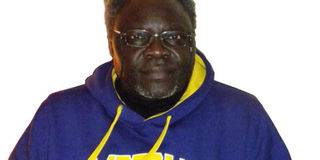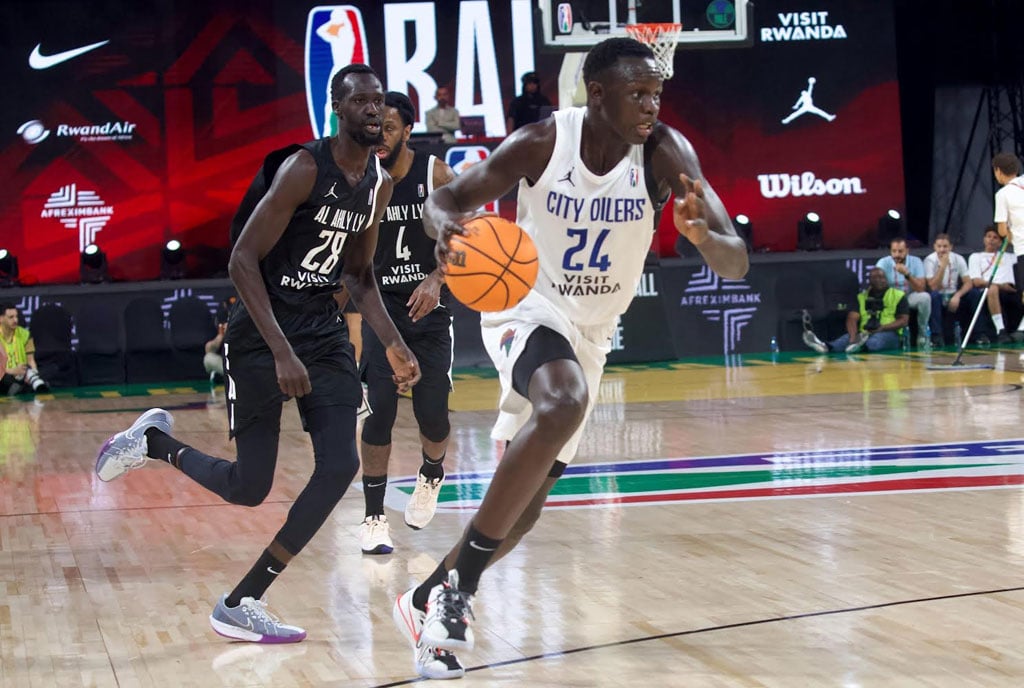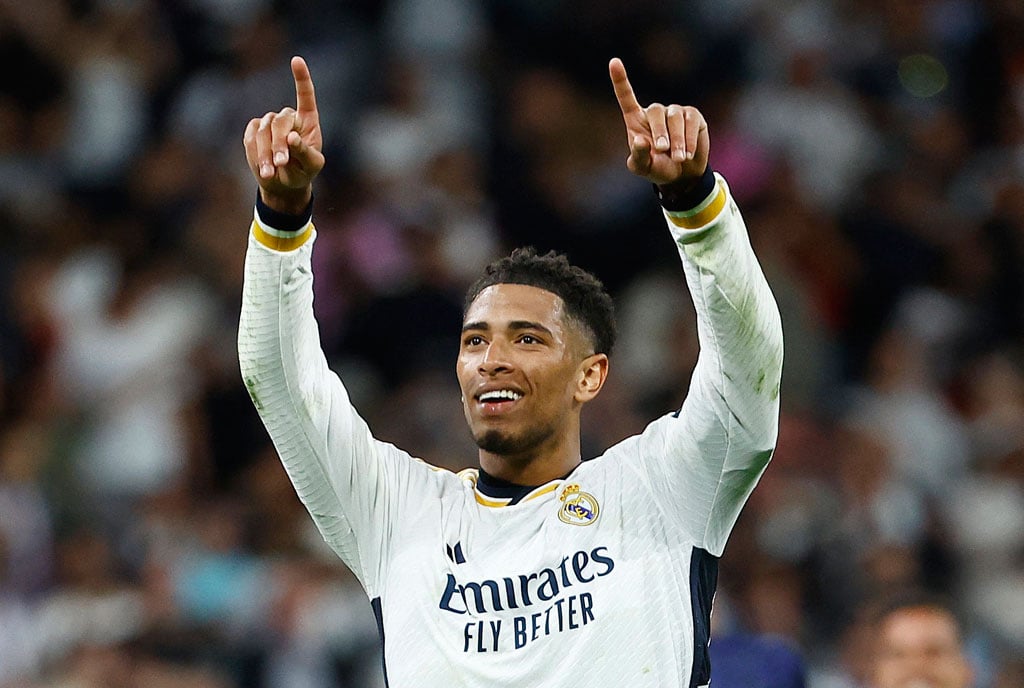Ssemwanga leads best right backs of all-time

Latigo was spotted early on while still a student at Kyambogo National Teachers’ College and he went on to captain Uganda Cranes from 1983 to 1998 before heading to settle in Germany. PHOTO/FILE
What you need to know:
Leading From The Back. If you were asked who Uganda’s right back of all time is, what would your answer be? Is it Edward Ssemambo, Ben Kasozi, Rasco Kasozi, Eddie Ssemwanga, Paul Hasule or John ‘Ross’ Latigo? Well, read on our Sunday Feature and make your own choice from these gallant players that stood tall in this position for both their clubs and the national team - Uganda Cranes.
JOHN ‘ROSS’ LATIGO
Nicknamed Ross after the 1982 Italian World Cup hero Paolo Rossi because of playing in similar style, Latigo was a superb right back like Hasule and Ssemwanga.
He enjoyed making dangerous overlaps in the opponents’ territory with some resulting into crucial goals. The one goal he scored against Zanzibar during the 1982 Cecafa Senior Challenge Cup match at Nakivubo Stadium remains memorable.
Latigo’s immense talent first came to light during the late 1970s when he was still schooling at Kyambogo National Teachers’ College. It was from there that he started playing for KCC FC in 1978.
Latigo and his schoolmate Sam Mugambe would in the afternoons be picked by a KCC FC vehicle to go for training at the club’s grounds in Lugogo before returning them back to school later in the evening.
Fellow Kyambogo students indeed felt proud of the two students for representing them and featuring for such a big football club in the country. Whenever the KCC FC vehicle returned the pair to college, fellow students would run to the parking lot while ululating and lift their bags all the way to their halls of residence.
Latigo was a KCC FC rearguard for a decade. In the beginning, he found it difficult to break into the first team that boasted of experienced and fierce old ‘lions’ in Charles Katumba and Peter ‘Umbwa Kali’ Wandyete.
But; “A vulture is a patient bird,” goes an old saying and so was Latigo. He trained hard and time came when he fitted well in the KCC FC first team. He was especially helped by the 1979 departure of Kirunda to the paid ranks in the Arab world.
He made his club debut against Nytil in a 1978 league clash. At first, Latigo played at the right wing before being switched to the right back position. He also sometimes assumed the role of a sweeper.
He was part of KCC FC squad in 1978 that clinched the Cecafa Clubs Championship title - becoming the first Ugandan side to register such a feat.
At Lugogo, Latigo joined the ranks with others like Charles Katumba, Wandyete and later Charles Masiko to form a formidable backline that dominated and won league titles in 1981, 1983 and 1985 plus five Uganda Cups in 1979, 1980, 1982, 1984 and 1987.
His first match for the Cranes came in 1981, an Afcon qualifier, against the Taifa Stars of Tanzania. In 1983 when Jimmy Kirunda finally ended his 10-year old spell as Cranes captain, coach Peter Okee looked around only to see Latigo as the right choice to take over the mantle.
May be this was because of the way he had demonstrated how great a player he was destined to be after a stellar show during the 1982 Cecafa Senior Challenge Cup in Kampala especially during the epic final against Harambee Stars of Kenya.
This is how senior Daily Nation reporter, Roy Gachuhi described Latigo after watching the final where the Cranes lost to Kenya in the post-match penalties. “I will never forget the foraging runs of their right full-back, John Latigo, in pursuit of goals. He covered every last blade of grass on his side of the pitch. Rallied on by their multitudes of supporters, the Cranes attacked Harambee Stars in waves, one after the other,” Gachuhi remarked. Latigo captained the Cranes from 1983 to 1988 before he left for further studies in West Germany. His started his first match as Cranes skipper breathing fire and leading the team in attacking and mauling mighty Algeria 4-1 in May 1983 Olympic qualifying tie at Nakivubo. Latigo retired from the Cranes team in 1988. He holds a Germany A Licence Football Coaching Course certificate which he acquired during the 1980s.
LATIGO FACTFILE
(ACHIEVEMENTS)
l Played for only one club KCC FC and Uganda Cranes.
l Won the league with KCC FC in 1981, 1983 and 1985.
l Won Uganda Cup with KCC FC in 1979, 1980, 1982, 1984 and 1987.
l He was well known for making dangerous overlapping runs.
l He made his Cranes debut in 1981 against Tanzania in an Afcon qualifier.
l His first match as Cranes captain was the 1983 Olympic qualifier against Algeria where Uganda won 4-1 at Nakivubo Stadium.
l He served as Cranes captain between 1983 and 1988.
l He holds a Germany A Football Coaching Licence.

Eagle-Eyed. Ssemwanga looks to offer back-up to Sam Munyenye (heading ball) during a league match at Nakivubo Stadium. The two featured for the Prisons FC (now called Maroons FC) team that won the topflight title - Uganda Super League in 1969. PHOTO/FILE
EDDIE SSEMWANGA
Some years back, a survey carried out by Soccer World - then an authoritative magazine on football matters published in Kampala during the 1980s and 90s indicated that over 90 per cent of those interviewed pointed to none other than Eddie Ssemwanga (RIP) as the undisputed best right back that has ever graced the Ugandan scene. Ssemwanga was a rare player who consistently represented Uganda for over a decade. Veteran sports journalist Hassan Badru Zziwa cannot agree more. “At his peak during the 1970s, Ssemwanga appeared in almost every Cranes match. He rarely either fell sick or sustained serious injuries. He was always around to take every free kick and penalty awarded to Uganda,” Zziwa remembers.
Ssemwanga was indeed one of those outstanding footballers to have emerged from Prisons FC and had an impact in the national team with others like goalie Peter Wanyonyi, Peter Okee, Parry Okech, Stephen Barazi, Ben Enzaga, Charles Ebalu and Abbey Nasur to mention but just a few. In the Cranes team, Ssemwanga proved a free-kick and penalty specialist, who had a special partnership with captain Jimmy Kirunda.
Whenever the Cranes team earned a free-kick, Ssemwanga would move to take it without hesitating. And no one raised a finger. In cases where the free-kick happened to be at an enticing spot, Ssemwanga and Kirunda would often look at each other and use sign language to make a decision on who was better positioned to take it. This is exactly what happened on Saturday June 26, 1977 during a crucial Africa Cup of Nations Qualifier against Ethiopia. Ssemwanga put the Cranes in front by converting a seventh minute penalty. Midway into the second half Ethiopia equalised through danger man Solomon. Barely two minutes to the end of the match, the score remained 1-1 and Nakivubo Stadium was as silent as a graveyard as the visitors looked poised to go through on away goals rule. Against the run of play, Uganda won a free-kick near the right corner flag. As usual, Ssemwanga stepped forward to take it after exchanging glances with Kirunda. Ssemwanga skillfully floated the ball into the crowded Ethiopian box and it was Kirunda who headed home the all-important goal, from the goalmouth melee, which rocketed Uganda Cranes to Ghana 1978.
This is to show what type of player Ssemwanga was. But how did Ssemwanga emerge onto the Ugandan soccer scene? According to former Prisons FC star Samson Munyeenye, Ssemwanga was one of the six players the club recruited from Masaka during late 1960s and brought to Luzira to play for them. “He was an exceptional defender cum midfielder gifted with a powerful shot that often penetrated defences of opponents.” It was then a tradition for the Prisons Service Department to provide recruited players with jobs depending on their education levels. On joining Ssemwanga first worked as an Askari (security guard) but his footballing skills elevated him up the ladder quickly on the recommendation of then coach Peter Okee and sports instructor Bill Kinkham.
In the Cranes team which Ssemwanga consistently played for from 1971 to 1982, he won the 1973, 1977 and 1976 Cecafa Senior Challenge Cup title, and also participated in three Afcons; 1974, 1976 and 1978.
In Ghana 1978, Ssemwanga was one of the few members of the squad that played in all matches at the continental showpiece without being substituted. After the fall of Idi Amin’s government in 1979, many players linked to forces went into exile for fear of being arrested and executed. Ssemwanga was not an exception and retired to his home village in Masaka.
When the Masaka Union officials approached him in 1982 to return to the beautiful game, he never hesitated as he still had the guts and love for the game. He was part of the Masaka side that whipped SC Villa 4-1 in their own den at Nakivubo in the league. He finally retired in 1985.
SEMWANGA FACTFILE
(ACHIEVEMENTS)
l Played for Prisons FC and Masaka Union FC.
l Played for the Cranes in the Afcons of 1974, 1976 and 1978.
l He won the 1973, 1976 and 1977 Cecafa titles with Uganda Cranes.
l At 1978 Afcon in Ghana, he played in every match without being substituted.
PAUL ‘V8’ HASULE
Paul Edwin Hasule was nicknamed ‘V8’ for being too strong and his ability to cruise all around the pitch in a similar way the newly launched V8 Land Cruiser could penetrate any complicated terrain. According to yours truly, Hasule scored arguably the best goal I ever saw from a Ugandan footballer anywhere in the world. This was during the 1985 Kuwait Friendship Tournament when his ‘thunder-bolt long ranger’ from over 30 yards was greeted with deafening cheers after landing in the Iraq net to give Uganda the lead.
It was such a wonder-goal that television stations from across the Arab world and Uganda kept replaying for many years thereafter.
I could as well compare this goal to other good ones like Phillip Omondi’s goal against Arab Contractors of Egypt during the return leg of African Cup Winners Cup Second Round Return Leg at Nakivubo in 1983. Or again, Omondi’s marvelous header to equalise for KCCA FC in Zimbabwe during the 1984 Africa Cup of Champion Clubs Return Leg against Dynamo Harare.
Hasule’s true football career started early on when he was seen playing for the best club in eastern Uganda, Mbale Heroes. He started out as a right winger, who sometimes switched to centre forward. He was poached by SC Villa when Mbale Heroes was relegated to the lower division in 1981. At SC Villa his first match was against Nile FC in the Jesse Owens Cup held in November the same year. Hasule’s emergence proved so special the following year. He was instrumental in the SC Villa side that went into records by going all the way unbeaten to win the league in 1982.
At SC Villa, it was Kirunda that advised coach George Mukasa to switch Hasule to the defence department which suited his body size. He kept switching positions from right full-back to central defence and was even allowed some liberty to make overlapping surges up-front. Apart from the historic 1982 league title, Hasule went on to win another seven titles and four Uganda Cups with SC Villa. In 1991, he made history by leading SC Villa to the final of the African Champions League thus becoming the second Ugandan club to register such a feat - 19 years after Simba had done the same.
As if to show that this was no flash in the pan, Hasule once again spearheaded SC Villa to the final of the inaugural Caf Cup losing to ICC Shooting Stars of Nigeria in 1992.
Hasule earned his Cranes debut cap in 1983. It was an Olympic qualifier against African giants Algeria who were fresh from the 1982 World Cup in Spain. Hasule played a great match scoring a brace in Uganda’s 4-1 victory over the Desert Warriors. He took over as Cranes skipper in 1988 when John Ross Latigo left for further studies in West Germany. He wasn’t one to shy away from responsibility. He stood tall and captained the national team to the 1989 and 1990 Cecafa Senior Challenge Cup victories before retiring in 1993.

Multi-talented Man Mountain. Hasule was as good and strong as an Ox. He was always outspoken and resolute both in defence and attack as justified by his successful career both as a player and coach. PHOTO/FILE
He briefly worked as assistant coach at SC Villa and left Villa Park in 1995 after so many great years of service.
He moved on to State House but like the English adage goes; “East or West, Home is best,” Hasule was soon back at Villa in 1998 as the head coach. He steered SC Villa to the 1998 and 2000 league titles and Cup doubles plus the 1999 league title when the club registered a record number of goals. In 2004, Hasule was elevated to coach Uganda Cranes but was later sacked after failing to eliminate Rwanda in an African qualifier.
On the negative side, Hasule’s worst moment came in 1991 when he was slapped with a one-year ban for man-handling referee Fred Wanyama. But his iconic like status saw officials decrease the ban to just three months.
HASULE FACTFILE
(ACHIEVEMENTS)
l Played for Mbale Heroes and SC Villa.
l Won the league with SC Villa in 1982, 1984, 1986, 1987, 1988, 1989, 1990 and 1992.
l Won the Ugandan Cup with SC Villa in 1983, 1986, 1988 and 1989.
l Was voted Uganda’s Footballer of the Year in 1992.
l Played for the Cranes from 1983 to 1993 winning the 1989 and 1990 Cecafa titles as captain.
l Led SC Villa to 1991 and 1992 finals in major African competitions.
l Appointed Cranes coach in 2004.
l Coached SC Villa (1994-1995) and (1998-2000), State House (1995), Simba (1996-1998) and Police FC (2000-2004).
l Won the league with SC Villa as coach in 1998, 1999 and 2000.
l Appointed Cranes captain in 1988 taking over from John ‘Ross’ Latigo.




